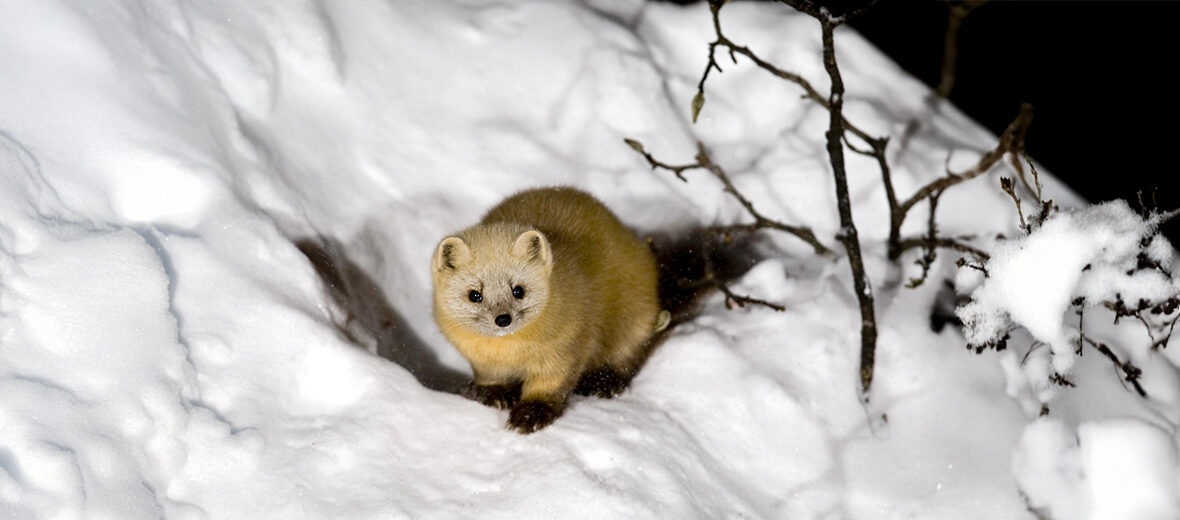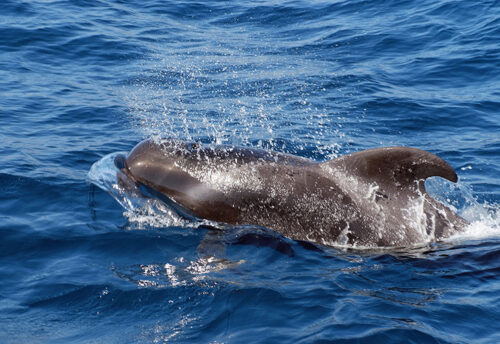
The sable, a species of marten, is a small omnivorous (eats meat and plant matter) mammal. They can be found throughout China, Europe, Japan, Kazakhstan, Korea, Mongolia, North America, and the Russian Federation. These critters face the threats of habitat loss and destruction at the hands of logging, fires, and fire suppression; hunting; and trapping for their silky soft fur. However, they are abundant enough to be listed as Least Concern by the IUCN. Their numbers are also increasing.
First the Stats…
Scientific name: Martes zibellina
Weight: Up to 3.97 lbs.
Length: Up to 22 inches, plus up to a 4.7 inch tail
Lifespan: Up to 22 years
Now on to the Facts!
1.) These critters primarily hunt by sound and scent.
2.) They prey on hares, mice, rats, voles, gophers, musk deer, ermines, weasels, birds, fish, and slugs. Also consumed are wild berries, and carrion (dead animals) left by wolves.
3.) Sables prefer thick forests mostly populated by birch, larch, pine, spruce, and Siberian cedar in both lowland and mountainous terrains.
4.) These critters have been known to travel upwards of 7.5 miles in a single day in search of food.
5.) The sable is crepuscular (active at dawn and dusk).
But wait, there’s more on the sable!
6.) While not necessarily arboreal (spend their lives in trees), they are extremely good climbers.
7.) Territorial boundaries are marked via scent produced by glands found on their abdomen.
Did you know…?
Sables are able to interbreed with pine martens. However, the offspring, called kidus, are usually sterile and cannot reproduce.
8.) They are preyed on by eagles, foxes, lynx, large owls, tigers, wolverines, and wolves.
9.) During the mating season, between June – August, males will violently fight one another for breeding rights.
10.) Females undergo delayed implantation (delay in the egg’s implantation) of up to 8 months after insemination.
But wait, there’s still more on the sable!
11.) Even though females undergo up to a 298 day gestation (pregnancy) the embryonic development actually takes up to 30 days.
12.) Up to 7 cubs are born each breeding season, with 3 being the average.
Did you know…?
The so-called kolinsky sable-hair brushes used for watercolor or oil painting are not manufactured from sable fur, but from the fur of the Siberian weasel.
13.) At 7 weeks of age, the young are weaned and then given regurgitated food.
14.) Unfortunately, sable fur has been a highly valued item in the fur trade since the early Middle Ages, and is typically considered to have the most beautiful and richly tinted pelt among martens. Sable fur is rare because it retains its smoothness in every direction it’s stroked.
15.) Imperial Russian fur companies produce an estimated 25,000 skins annually, with nearly 90% of the product being exported to France and Germany.
Now a Short Sable Video!
Be sure to share & comment below! Also, check out the Critter Science YouTube channel. Videos added regularly!
Want to suggest a critter for me to write about? Let me know here.
Some source material acquired from: Wikipedia & IUCN
Photo credit: Tokumi




